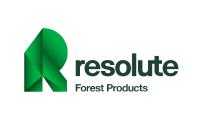Unpacking ESG: Key Insights from Climate Week NYC
During a year with relatively limited progress in climate leadership, in the private sector, an increasing number of companies have made ambitious pledges to achieve decarbonization in the coming decades. While these commitments received acclaim upon their initial announcement, companies are now under pressure to fulfill their promises and take tangible actions towards decarbonization.
With Canada’s climate commitments called into question on world stage, Prime Minister Justin Trudeau pledged to put in place a cap on emissions from the oil and gas industry in 2023 as part of broader efforts to fight climate change. He told the assembly that his government would “continue to increase our ambition at every level.” Only leaders of countries seen as taking climate action seriously were allowed to speak at the event. Trudeau was given an opportunity to address the UN, but only after being called out by the facilitator for allowing new oil and gas projects. “Canada was one of the largest expanders of fossil fuels last year,” Melissa Fleming, under-secretary-general for global communications, noted as she introduced Trudeau.
Even though ESG has become a subject of intense political debate, the core principles underpinning this movement, including Corporate Social Responsibility (CSR), diversity, and sustainability, continue to be of paramount importance for ensuring a company’s sustained long-term performance.
Canadian businesses can seize the opportunity to proactively initiate comprehensive, integrated ESG reporting. This approach not only generates value for their investors, clients, and employees but also positions them for compliance with global regulations in the future.
In this context, ESG rating providers have been emerging as influential institutions. The field of sustainable investing is expanding rapidly, and mutual funds that align with ESG ratings are attracting substantial investments. Consequently, an increasing number of investors depend on ESG ratings as a third-party evaluation of a corporation’s ESG performance. This growing reliance on ESG ratings is now wielding significant influence over investment decisions, potentially leading to substantial impacts on asset prices and corporate strategies.
To ensure that their ESG measurements and disclosures offer an accurate representation of their performance and actionable improvement targets, corporate sustainability leaders must consider the following:
A. The consequences of disagreements from ESG raters (like KLD5, Sustainalytics, Moody’s ESG, Refinitiv, MSCI, and S&P Global):
- Difficulty in Evaluating ESG Performance: ESG rating divergence complicates the assessment of the ESG performance of companies, investment funds, and portfolios. This divergence can obscure the primary purpose of ESG ratings, which is to provide a clear evaluation of ESG practices.
- Reduced Incentives for ESG Improvement: When ESG ratings diverge significantly, companies receive conflicting signals from rating agencies regarding which actions are expected and valued by the market in terms of ESG performance. This divergence can lead to a reduced motivation for companies to invest in activities aimed at improving their ESG practices.
- Limited Impact on Asset Prices: Market pricing of firms’ ESG performance may be influenced by fundamental value or investor preferences. However, when ESG ratings diverge widely, it can scatter the influence of ESG performance on asset prices, making it less likely for the market to accurately reflect the impact of ESG practices on the valuation of assets.
- Challenges in Linking CEO Compensation to ESG Performance: ESG rating divergence presents difficulties in tying CEO compensation to ESG performance. Contracts governing CEO compensation are likely to be incomplete, and CEOs may focus on optimizing their performance in one specific ESG rating area while neglecting other critical ESG issues. Consequently, CEOs might achieve the targets set by the rating but fail to enhance the overall ESG performance of the company. This can lead to a misalignment between CEO incentives and the broader goals of improving the firm’s ESG performance.
B. Getting ready to implement new requirements:
- While entities with significant supply chain risks may already be involved in diligence and reporting efforts, the Modern Slavery Act is poised to encompass a broader range of organizations that may not have previously contemplated the possibility of modern slavery issues. Given the potential legal ramifications for directors and officers, and with the deadline for reports under this new legislation less than a year away, it is advisable to review your governance policies, map your supply chain, assess areas of vulnerability, and explore any existing gaps and strategies for risk mitigation.
- Take a moment to assess how your diversity, equity, and inclusion (DEI) policies and mechanisms for renewal align with the changing expectations articulated by regulatory bodies like CSA and the Ontario Securities Commission, investors, and proxy advisory firms. It’s essential to examine your skill matrix and ensure it accurately reflects the diversity attributes that hold significance for your company. This proactive review will help your organization stay in step with evolving standards and demands in the realm of DEI.
- When it comes to executive compensation, it’s important to integrate ESG considerations. After a board of directors or a board committee has identified the relevant ESG factors, it’s advisable to contemplate the inclusion of ESG Key Performance Indicators (KPIs) in compensation plans. This approach aligns executive incentives with the company’s ESG goals and underscores the commitment to sustainable and responsible business practices.
- Regarding climate-related reporting, it’s crucial to take a proactive approach in evaluating your ESG (Environmental, Social, and Governance) reporting procedures. Consider incorporating established standard frameworks into your reporting practices and prepare for the impending implementation of compulsory climate disclosure regulations. It’s also important to be cautious of potential legal liability. Verify the accuracy of your ESG claims and, when suitable, include forward-looking, precautionary language in your ESG disclosures. This comprehensive approach helps your organization navigate the evolving landscape of climate reporting and reduce potential risks.
Regulators have the potential to address the problem of ESG rating divergence. Indeed, by designing and effectively implementing an optimized ESG capability, the business will bolster its position to achieve Principled Performance.
Initially, establishing consistency in ESG (Environmental, Social, and Governance) disclosures among companies would create a dependable and readily available dataset for all ESG ratings.
Additionally, regulatory bodies could play a role in enhancing the clarity of ESG rating disparities and promoting competition based on the accuracy of measurement.
Nevertheless, a degree of classification is crucial for comprehending the reasons and areas where ESG rating methodologies diverge. Mandating that ESG rating agencies align their data with a shared classification system would streamline such comparisons significantly. This move could also stimulate competition as investors would find it easier to supplement or substitute measurements of a particular category with data from an alternative provider.
This approach would allow rating agencies to retain their freedom to uphold unique and innovative methodologies while enhancing the comparability of ESG ratings.
Bringing all these elements into alignment reinforces the robustness of the business argument, showcasing how the organization can foster sustainable, enduring growth and amplify value generation through the development of a mature ESG framework. By integrating ESG considerations into strategic choices and investment assessments, the company will shift its focus away from short-term perspectives, reaping rewards that extend far into the future.
FT 500 are particularly sensitive to the implications of sustainability rankings to investors. ESG criteria are part of due diligence for trillions of investment dollars. CSE’s upcoming training program with a focus on Canada will focus on executive-level issues and corporate sustainability ESG strategy. CSE’s five-part methodology, put successfully into practice by Fortune 500 firms and other leading companies around the world, includes the following parts: awareness and training; stakeholder mapping and engagement, assessment, goals and strategy, and reporting.
CSE’s Canada, Certified Sustainability (ESG) Practitioner Program, Leadership Edition 2023, takes over Canada Oct. 19-20-23, 2023 to help sustainability professionals rise to any occasion. This challenging three-day training offered by Center for Sustainability and Excellence (CSE) aims to give you all the latest tools and resources required to implement or upscale existing sustainability initiatives taking place in your organization.
For more information and Early Bird pricing, go to https://cse-net.org/upcoming-certified-training-programs/








